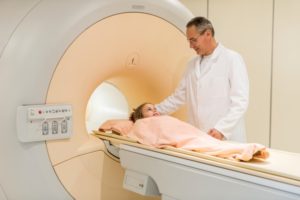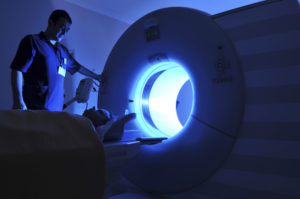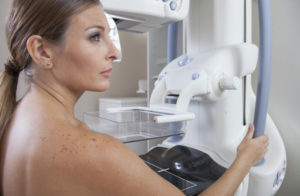Additional Imaging for DCIS
As we discussed yesterday, ductal carcinoma in situ or DCIS is the breast cancer with a controversial reputation. Because vigilance is our job, we want to catch breast cancer in early rather than advanced stages. This sometimes requires a multi-pronged imaging approach.
Different Modalities
Radiologists use a range of modalities, from mammography to breast ultrasound to breast MRI to detect changes and abnormalities in breast tissue. Each modality has its strengths and weaknesses, and as we have said before, the different imaging tests complement one another, rather than replace. Which breast imaging test will be used for which patient is tailored to the specific needs and questions to be answered. Research into which patients will benefit most from additional imaging is important to improving how we do our job. All of the imaging modalities may be used for screening (in women without a breast symptom, based on risk of cancer) or for diagnosis (when the woman has a breast symptom).
MRIs and DCIS
 For patients with newly found breast cancer, MRI of the breasts may be used for a variety of different reasons. This is particularly true for invasive breast cancers, with MRI helping to determine how extensive the cancer is in the breast, to evaluate the lymph nodes, and to look for unsuspected additional sites of possible cancer in the same and opposite breasts.
For patients with newly found breast cancer, MRI of the breasts may be used for a variety of different reasons. This is particularly true for invasive breast cancers, with MRI helping to determine how extensive the cancer is in the breast, to evaluate the lymph nodes, and to look for unsuspected additional sites of possible cancer in the same and opposite breasts.
For patients with newly diagnosed DCIS, the role of breast MRI at the time of diagnosis is less well-defined. It can be used to look for evidence of a larger, possibility invasive component or to look for additional sites of disease. DCIS is sometimes hard to see on MRI as some of these lesions do not show enhancement (changes in blood flow we detect by the injection of contrast or dye) and are hard to detect. A recent study of 2300 women with a diagnosis of DCIS looked at the role of MRI and found no difference in outcomes after 8 years between those having an MRI and those not having MRI at the time of diagnosis. There were some issues with how the study was designed, and the results need to be assessed in a larger group of women, but for now this might support foregoing the MRI if the diagnosis is DCIS, and there are no complicating factors, such as family history.
More Than One Disease
One of the biggest realizations of breast cancer research in the past decade is that breast cancer is not one disease. Breast cancer has many different faces, and many different ways of affecting women. Research into DCIS and how to manage it are ongoing. We will continue to strive to do the best imaging possible to get you on your way to your best possible health!





